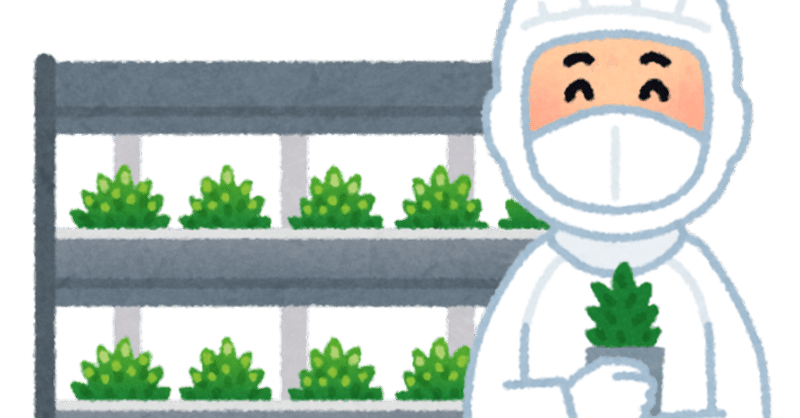
植物工場の進歩に期待しています Looking forward to the progress of the plant factory!
== English translation (Japanese original follows) ==
The following article appeared in today's Nikkei Newspaper.
Butai Farm in Sendai Expands Sales Channels for Factory Lettuce
Energy-efficient production, long-lasting freshness, and retail development under the SDGs
仙台の舞台ファーム 工場レタス販路拡大
省エネ生産・鮮度長持ち SDGsで小売り開拓
So today I will write about the advantages of plant factories.
In fact, I once helped sell a plant factory when I was stationed in a country.
The situation may have changed since then due to technological advances, but the principle has not changed much.
I don't think so.
However, it is possible that my memory is wrong. Please keep this in mind.
< The good thing about plant factories >
・The bacteria is very low compared to planting in soil.
⇒ Longer lasting ⇒ Reduces vegetable waste.
You can eat them without washing.
・The wavelength of the light can be adjusted with LEDs.
= The LEDs can adjust the wavelength of the light, so the optimum light can be changed depending on the type of vegetable.
⇒ It is possible to grow vegetables faster and bigger than growing them under sunlight.
The taste of vegetables can be changed depending on the light.
・Vegetables are grown in a building where temperature and humidity are also controlled.
⇒ The amount of vegetables grown and the amount of vegetables produced are not affected by the weather.
Vegetables can be grown even in urban buildings.
・We use machines to control water, temperature, humidity, and so on.
⇒ Less manpower is required.
Plant factories use various machines and a lot of electricity.
Therefore, it is more expensive than producing the same vegetables by conventional methods.
The variety of vegetables that can be produced is limited. (Lettuce, parsley, and herbs are the main ones.)
I first learned about plant factories when I was stationed in Ethiopia. It was probably around 1997.
Amazing technology! But in Ethiopia, where there are frequent power outages, a plant factory is not realistic.
The
I am looking forward to the future progress of this technology.
== Japanese original ==
今日の日経新聞に下のような記事がありました。
仙台の舞台ファーム 工場レタス販路拡大
省エネ生産・鮮度長持ち SDGsで小売り開拓
そこで、今日は植物工場の長所について書いてみます。
実は、私はある国に駐在していた時に植物工場の販売のお手伝いをしたことがあります。
その後技術の進歩などで状況が変わっているかもしれませんが、原理はそれほど変わって
いないと思います。
ただし、私の記憶が間違っている可能性はあります。 この点には注意しておいてください。
植物工場の良いところ:
・土に植える場合と比べて、菌が非常に少ないです。
⇒ 長持ちします ⇒ 野菜の廃棄ロスをへらすことができます。
洗わずに食べられます。
・LEDで光の波長を調節できます。
= 野菜の種類によって、最適な光を変えて育てることができます。
⇒ 太陽光で育てるよりも早く、大きく育てることができます。
当てる光によって、野菜の味を変えることができます。
・建物の中で、温度や湿度も調節して野菜を育てます。
⇒ 育ち具合やできる量が天候の影響を受けません。
都会のビルの中でも野菜を作ることができます。
・機械を使って水や温度、湿度などの管理をします。
⇒ 人手を減らすことができます。
植物工場は、いろいろな機械を使いますし、電気もたくさん使います。
そのため、従来の方法で同じ野菜をつくるよりも高くなります。
作れる野菜の種類が限られています。(レタスやパセリ、ハーブが中心です。)
私が植物工場を知ったのはエチオピアに駐在していた時です。多分1997年ごろです。
すごい技術だ! と思いましたが、停電がひんぱんにあるエチオピアで植物工場は現実的
ではありませんでした。
これからの技術の進歩に期待しています。
この記事が気に入ったらサポートをしてみませんか?
